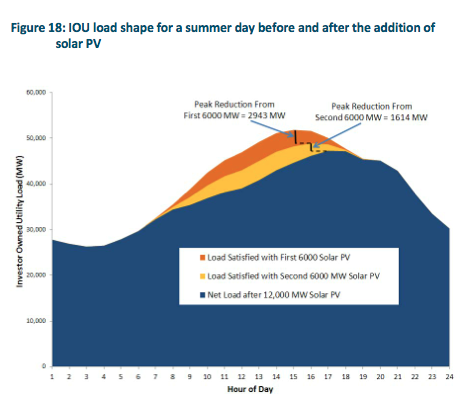Construction of such large-scale green-energy projects has splintered environmental groups. When concern over global warming was at a peak, national organizations such as the Sierra Club and the Natural Resources Defense Council threw their support behind industrial-scale wind and solar installations on public land. Now some smaller conservationist groups object to what they consider an environmentally destructive gold rush.
"Of course we need to do solar, but it should go on rooftops or in appropriate places, not the pristine desert," says April Sall, director of the Wildlands Conservancy in Oak Glen, California, operator of the state's largest nonprofit preservation system. "We need to tackle warming — but not forget that there are other things at stake."
Priorities Clash
The Mojave solar project embodies the clash of environmental priorities. The $2.2 billion installation being built by closely held BrightSource Energy Inc. of Oakland, California, is designed to power 140,000 homes without emitting greenhouse gases. But it threatens the tortoises. That's why the Western Watersheds Project conservationist group of Hailey, Idaho, sued to stop it in a Los Angeles U.S. court. (For an interactive graphic of the project, click here.)
The 120-year-old Sierra Club, which calls itself "America's largest and most influential" environmental group, also lobbied for changes to the project's design to protect the tortoises. Yet the 1.4 million-member organization chose not to try to block the plant, says Barbara Boyle, a Sierra green energy specialist.
"Ultimately, we need to jump-start renewables to combat climate change, and large-scale solar has to play a big part in that," Boyle says. However, as it became clear the project was rooting out many more tortoises than projected and as some California chapters urged action, the organization joined a coalition that sued the Department of the Interior in March to block another long-planned Mojave solar project that it says threatens wildlife.
Climate Change
Similar disputes are playing out elsewhere and show a growing concern among green groups and willingness to block large-scale solar and wind projects when the cost to wildlife and habitat seem to outweigh the benefits of fighting climate change. A surge in supplies of cheap, clean-burning natural gas has also begun to undercut demand for more costly green energy.
The green backlash against sacrificing habitat and wildlife to curb global warming parallels polls finding that the public rates climate change low on a menu of environmental problems and has doubts whether it can be fixed. In a March Gallup survey, the issue ranked last among seven environmental concerns, with just 30 percent saying they worried about it "a great deal."
A Washington Post-Stanford University poll in July found that while most Americans believe the earth is warming, 60 percent said little could be done to stop it, and more than 70 percent opposed energy taxes to address it.
Lethal Blades
Near the northern Florida Everglades, the Audubon Society has fought a 200-megawatt wind farm on 10,000 acres (3,900 hectares) of private sugar land, saying its 475-foot tall turbines and spinning blades will form a death corridor for migratory birds and the endangered snail-eating Florida Kite. The project, proposed by closely held Wind Capital Group LLC of St. Louis, was approved by the Palm Beach County Commission and could produce energy for 60,000 homes, the company says. It still needs state and federal permits.
In the southern Sierra Nevada of California, Defenders of Wildlife sued in federal court to block the proposed North Sky River wind-power project. It would be built by NextEra Energy Inc., based in Juno Beach, Florida, next to an existing wind farm where turbine blades killed eight golden eagles this year.
The American Bird Conservancy accused the U.S. government in a lawsuit in Washington of suppressing information about the threat that wind energy projects pose to migratory birds and other wildlife. The government denied the allegation.
26 Projects
Including the Mojave project that is relocating desert tortoises, the Interior Department has accelerated construction approval for 26 large-scale solar plants on public lands since 2009, including nine that it cleared in August. The Obama administration has steered $9 billion in stimulus funds from the 2009 American Recovery and Reinvestment Act to 23,000 solar and large-scale wind installations, according to the Department of Energy.
Conservationist and Native American groups sued to halt five other Mojave solar projects. The organizations argue that federal and state authorities conducted inadequate environmental reviews and failed to consult with tribes on sacred sites. The Bureau of Land Management, the solar companies and the state deny the allegations.
Dozens more solar plants could arise across the American desert West. A July BLM plan allocates 285,000 public acres to 17 solar zones. An additional 19 million acres — an area almost the size of West Virginia — may be approved for solar projects. The goal is to produce 23,700 megawatts, enough to power 7 million homes, according to the BLM. Solar power now provides less than 1 percent of U.S. electricity, amounting to 5,700 megawatts, or enough for about 1 million households.
Abandoned Mines
Conservationists say it is wrongheaded to rip up the public desert and destroy wildlife habitat when millions of already-degraded acres are available. The Environmental Protection Agency last year identified 80,000 to 250,000 abandoned mine sites that could be used for solar and other renewable energy projects, according to Janine Blaeloch, director of the Seattle-based Western Lands Project, a watchdog group.
20 Sep, 2012
-
Source: http://www.renewableenergyworld.com/rea/news/article/2012/09/displaced-tortoises-for-solar-in-mojave-roils-environmentalists?cmpid=rss
--
Manage subscription | Powered by rssforward.com






